Answering the call
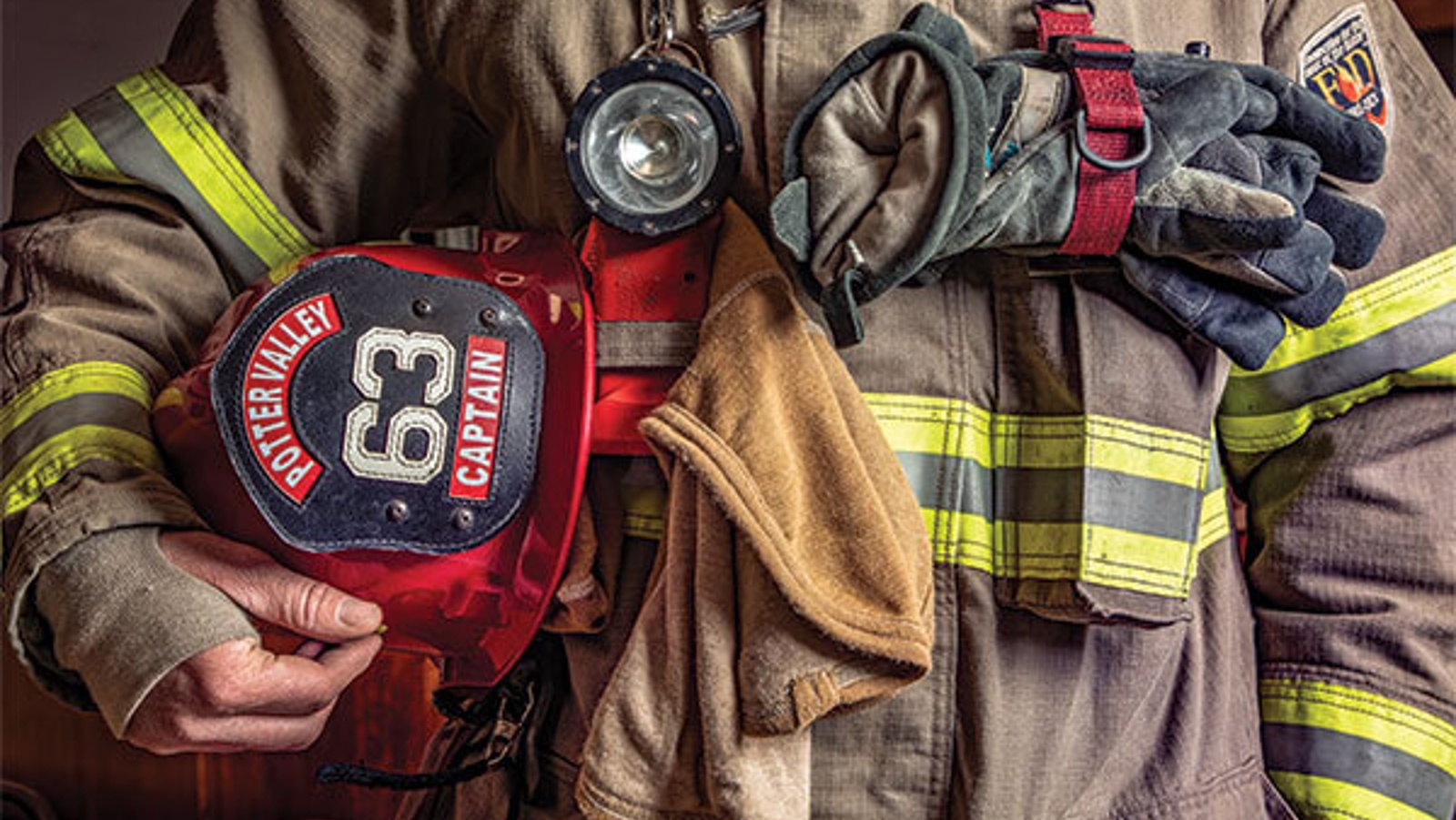
March/April 2022 California Bountiful magazine
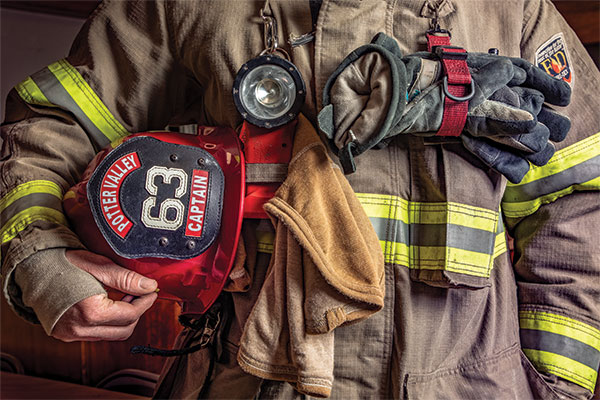
Farmers and ranchers increasingly do double-duty as firefighters
Story by Christine Souza
Photos by Lori Eanes
California's fire season is starting earlier and ending later each year, and dry conditions and a heavy fuel load on the landscape have increased the number and severity of wildfires. This, plus a growing population, has created an urgent need for more firefighters.
Of these volunteer and paid firefighters, many are farmers and ranchers who dedicate time to small, rural communities. Whether feeding cattle or pruning trees, these men and women are ready at a moment's notice to grab their gear, jump into the truck and respond not only to fires, but also to auto accidents, medical emergencies, hazardous-materials calls and more.
"You know, beep, beep, beep in the middle of the night and I get up and drive to the firehouse and respond to the call," said Kyle Farmer, a full-time volunteer with the Potter Valley Fire Department in Mendocino County. There, about 30 firefighters and officer volunteers serve a local population of about 5,000.
"A lot of times we have radios with us," Farmer said. "I have a pager, too, because working as a cattle rancher, I was going to lose my radio pretty fast if I carried a radio all the time."
Farmer, who works for his wife's family's Magruder Ranch, which specializes in grass-fed cattle and lamb, said he joined the local fire department as soon as he and wife Grace relocated to Potter Valley after their marriage eight years ago.
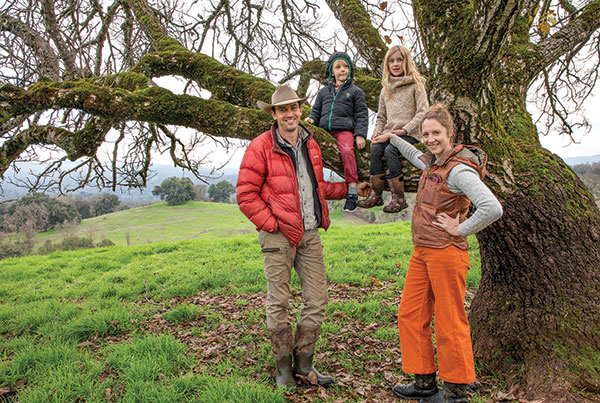
Rewards and sacrifices
"It is honestly one of the most rewarding parts of my life here. I'm just constantly amazed by the guys that respond," he said. "Farmers are extremely busy people but have a level of making their own schedule. The volunteer model requires large numbers of people but not all the time. It is really the best way to provide emergency services to rural areas."
Family time at home or work on the ranch is often interrupted by emergency calls, Farmer said, adding, "If you are married to a volunteer firefighter, you are a volunteer firefighter because you are the one to put the kids to bed by yourself or the one that sometimes finishes a two-person job alone."
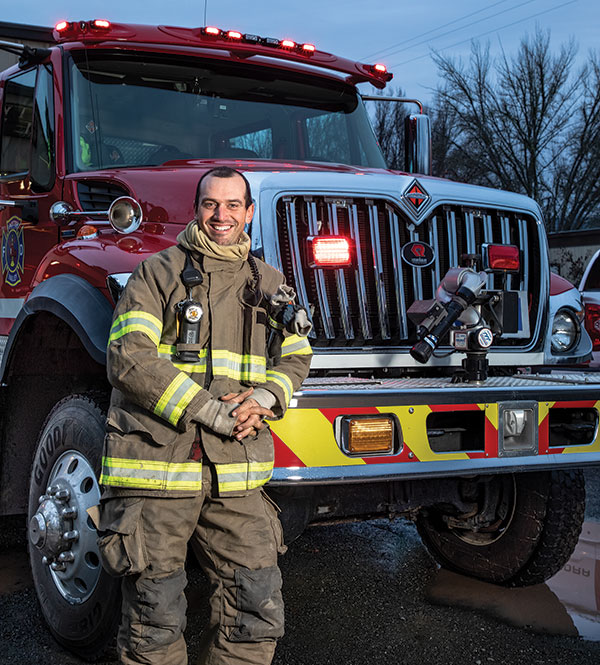
The California State Firefighters Association estimates there are 50,000 firefighters in the state, 15,000 of them volunteers. Of 1,100 total fire departments, the majority are either entirely or mostly composed of volunteers. The U.S. Bureau of Labor Statistics projects the employment of firefighters will grow 8% from 2020 to 2030 as the threat of massive fires continues. Last year alone, 8,786 fires burned an estimated 2,568,941 acres across California.
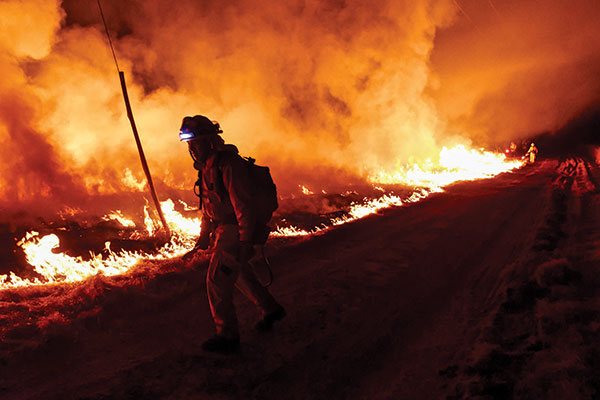
Livelihoods at stake
Potter Valley Fire Department volunteers were instrumental in helping extinguish destructive wildfires in 2017 and 2018, which scorched thousands of acres in Mendocino County. The 2017 Redwood Valley Complex Fire burned a 2,000-acre ranch Farmer's family leased, killing 45 cows. "The fire was moving so fast they weren't able to run away," he said. While recovering from a broken back at the time, Farmer said he and others patrolled at night for the first few days to make sure the fire didn't cross the road.
The 2018 Mendocino Complex Fire burned for more than three months, destroying additional ranch land in Mendocino County as well as Lake, Colusa and Glenn counties. Farmer said the amount of fuel that builds increases the severity of the fires.
"Fast-growing annual grasses that came in from other parts of the world tend to grow really fast and then die for the summer and leave an incredible amount of light, flashy fuels," he said. "This has an absolute effect, not just on intensity of the fire and how it affects native species, but also whether or not firefighters can even touch it."
Fires are often stopped when they reach grazed land, Farmer said, so there is an increased focus on prescribed grazing, where ranchers are paid for animals to graze the land rather than ranchers paying others for the animals to graze.
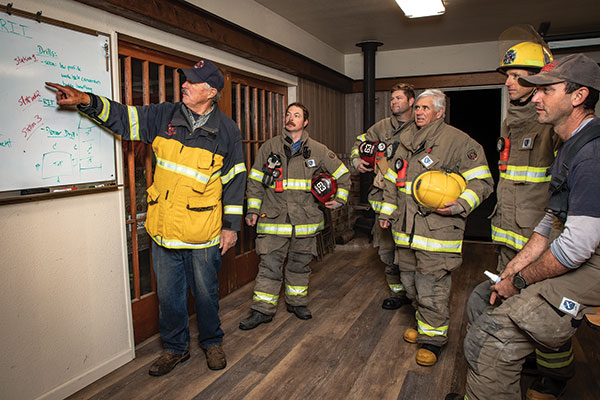
Veteran firefighters
Potter Valley winegrape grower Bill Pauli is a third-generation firefighter. He serves as the chief of the local department and his three sons are fellow firefighters. Pauli is following in the footsteps of his father and grandfather. He grew up around the firehouse and recalls riding his bicycle to visit his grandfather and later his father at the firehouse.
He even went on some calls with his dad. "That is what you did in a small valley," he said. "The siren blew and off you went; everyone had to go help."
Pauli said the Potter Valley Fire Department has a number of farmer or rancher volunteers, adding the department seeks out those with an ability to adapt and not overreact in a stressful situation. There is a strong bond formed among firefighters, who must rely on each other to do their part, Pauli said.
In Southern California, rancher Anthony Stornetta of Atascadero operates a cow-calf operation with his wife, Denise. They have been ranching for 25 years and raise registered Brangus and Angus cattle in San Luis Obispo, Santa Barbara and Monterey counties. Stornetta is a full-time, paid battalion chief with the Santa Barbara County Fire Department.
"You are not stuck in an office, you are out in the field all the time and every day is something new," Stornetta said of his fire-service career that spans 30 years. "There's hardly ever the same call twice, so it makes it a little dynamic."
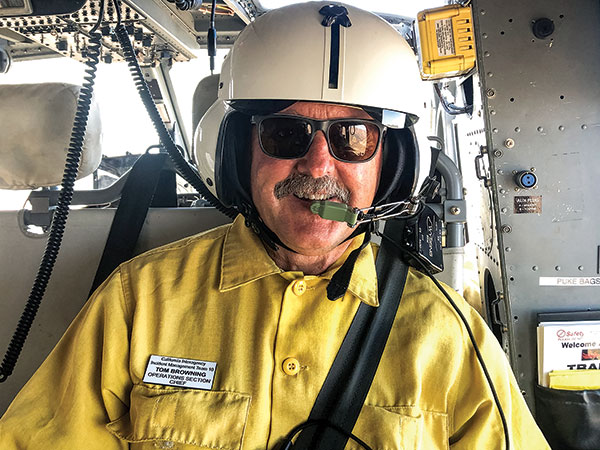
Stornetta oversees air and wildland efforts, including operations of helicopters such as the Firehawk, a Black Hawk helicopter converted into a firefighting aircraft that carries 1,000 gallons of water. With the aircraft, he conducts many high-risk rescues and medical calls such as "putting people down on a hoist and lowering them into the canyons."
With a background in wildland firefighting, Stornetta also oversees a battalion that uses bulldozers and hand crews to reduce the threat of wildfires, and often works with farmers and ranchers to create a break between them and urban areas "so that we have a chance to stop the fire," he said.
Nevada County rancher Tom Browning said he was introduced to the fire service while growing up on a ranch. He submitted his application as a seasonal firefighter after graduating high school and now has 40 years of experience.
"I was raised around fire as a tool to clear and maintain the ground," said Browning, a volunteer firefighter and member of a multiagency incident-management team. "I chose a career in the fire service to support my farming habit. I found it to be a great career opportunity, while still raising a few cows in the meantime."
New law gives ranchers access to land during wildfires to save livestock
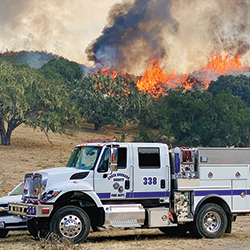
During an emergency, it is important that ranchers can access property to check on livestock and, if needed, move them to safety to another part of the ranch.
Legislation signed into law last year authorizes counties to establish a livestock pass program, allowing ranchers to access property beyond fire lines and road closures. The legislation was sponsored by the California Cattlemen's Association and supported by the California Farm Bureau.
"There's never really been anything for commercial producers to get in and get their livestock," said rancher Anthony Stornetta, a Santa Barbara County Fire Department battalion chief. "With this, they come to a four-hour training session and get a card that allows them access."
Stornetta, who chairs the cattlemen's association fire subcommittee, said the livestock pass program is also good for firefighters on scene, adding, "Many times (fire departments) need water or access to where the fire started and we don't know where those roads are or where the water is located, so having those ranchers there is of utmost importance.
"Ranchers have been on these ranches for multiple generations, so they know where fires naturally stop, how wind blows through the canyon and things that can help us," he said. "We utilized it on the Dixie Fire and the Alisal Fire with great success."

